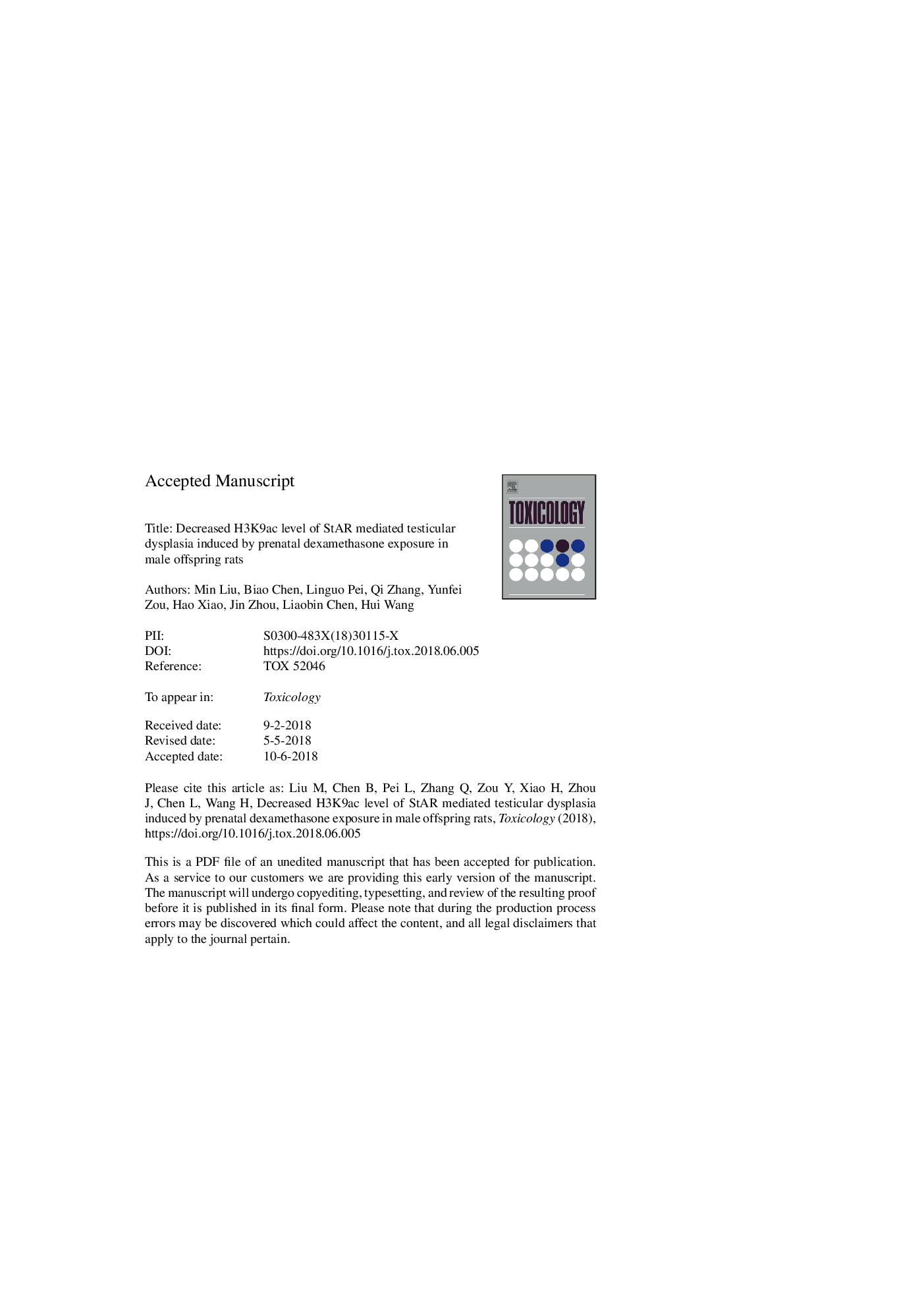| Article ID | Journal | Published Year | Pages | File Type |
|---|---|---|---|---|
| 8552706 | Toxicology | 2018 | 29 Pages |
Abstract
Prenatal dexamethasone exposure (PDE) could induce testicular developmental toxicity in adults. The present study aims to confirm its intrauterine origination, and to explore its potential intrauterine programming mechanism. The pregnant rats were respectively injected subcutaneously with 0.2 and 0.8â¯mg/kgâ¯d dexamethasone during gestational days (GD) 9 to 20. The testes and serum of offspring rats were collected on GD20 and postnatal week (PW) 12. In vivo, PDE significantly induced the abnormal testicular morphology in offspring from GD20 to PW12. Moreover, the serum and intratesticular testosterone levels and the expression of testicular steroidogenic acute regulatory protein (StAR) were reduced by PDE. The expression levels of glucocorticoid receptor (GR) and histone deacetylase 7 (HDAC7) were increased in fetal testes. Furthermore, the histone 3 lysine 9 acetylation (H3K9ac) level in the StAR promoter was decreased by PDE from GD20 to PW12. In vitro, mouse Leydig tumour cell line (MLTC-1) cells were treated with dexamethasone (20, 100 and 500â¯nM), and the testosterone production and StAR expression were reduced. Moreover, dexamethasone increased the expression of HDAC7 by activating GR, which decreased the H3K9ac level in the StAR promoter. Taken together, PDE caused testicular dysplasia before and after birth in male offspring rats, and its mechanism was related to the low-expressional programming of StAR mediated by decreasing H3K9ac level.
Keywords
Related Topics
Life Sciences
Environmental Science
Health, Toxicology and Mutagenesis
Authors
Min Liu, Biao Chen, Linguo Pei, Qi Zhang, Yunfei Zou, Hao Xiao, Jin Zhou, Liaobin Chen, Hui Wang,
